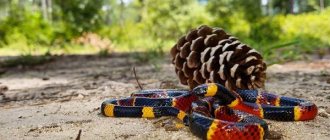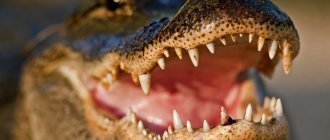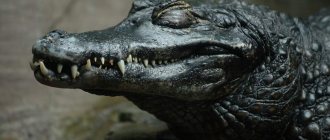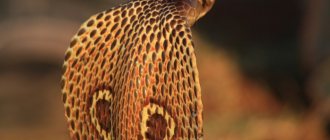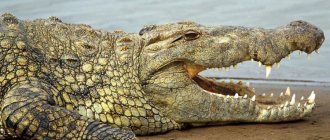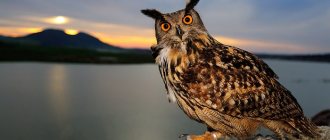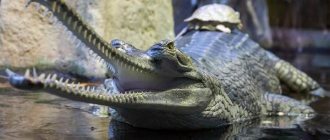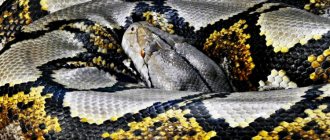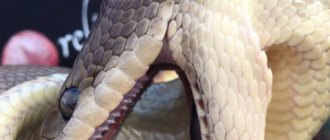Classification and evolution of alligators
Alligators belong to the same family as other large reptiles such as crocodiles, but they are native to only two countries—the southern United States and China (where Alligators are now nearly extinct). Alligators are generally smaller than their crocodilian cousins, but they are known to move at speeds of up to 15 mph on land, making them one of the fastest large reptiles in the world. Despite their size, there are a number of distinct differences between alligators and crocodiles, as an alligator's snout is shorter than a crocodile's, and with its mouth closed, an alligator's teeth are not visible, but a crocodile can. Alligators are also commonly known as alligators in their native, Southern North American habitat.
Alligators are descendants of the most ancient inhabitants of the planet
Alligators and crocodiles are very similar to each other as relatives of the order of aquatic vertebrates. the difference between a crocodile and an alligator . But these species of reptiles are considered rare representatives of revered predators, whose genus dates back tens of millions of years. They managed to survive thanks to their habitat, which has changed slightly since ancient times.
Alligator appearance and anatomy
Alligators are very large reptiles , the males of which reach 4.5 meters in length. The female alligator tends to be slightly smaller, with a total body and tail length of 3 to 3.5 meters. The Chinese alligator is a much smaller species, almost half the size of the female American alligator. Alligators have an armored body that varies in color from yellow to green and brown, eventually becoming almost completely black in old age. The Alligator's tail is incredibly muscular and is used to propel the animal when it is in the water. Alligators have short, stocky legs with webbed toes. Not only does this help them when they are swimming, but it also means they can negotiate muddy river banks with ease.
Description of the species
These reptiles are distinguished by a wide muzzle, dorsal location of the eyes and short strong legs. The front ones have five fingers, the back ones have four. On land they can reach speeds of up to 20 km/h.
theater_ofthe_sea
The predator's swimming method is similar to that of a fish: amplitude movements from side to side with the tail and pelvic region.
The muscles located on the reptile's abdomen can change the position of the lungs, which allows it to dive into the water, float up and make turns. Also, these predators perfectly regulate the depth control, which makes them not only graceful, but also dangerous.
The nostrils are located at the tip of the fashion. This helps the alligator, completely submerged in water, to breathe.
This feature also preserves the ability of normal breathing during hibernation, during which the animal can completely freeze into ice.
The number of teeth varies from 74 to 80. They are not very large with blunt ends. When they break off, new ones grow.
Author – dtaelman; photo of Mississippi alligator
The back is armored with bone plates. The tail is flattened and widened, with strong muscles.
Dimensions
The Louisiana alligator is a large animal with pronounced sexual demorphism, with males much larger than females.
Males weigh about 200 kg and have a length of about 3.5 m. Females - about 50 kg and 2.5 m. The size and weight of the animal varies depending on its habitat and age. Mature individuals are usually more massive and heavier than young ones.
filip_jahoda_jahyron
Alligators living in Florida are smaller in size. The mass of a male individual is 70 kg, females - 55 kg. The further north the reptile is, the less its weight.
It is reported that caught individuals weighed 450, 500 and 620 kilograms, and their length exceeded 4.5 meters.
Lifespan
The average lifespan in nature is 35 years. In captivity these numbers increase significantly. A number of experts believe that in the absence of enemies and with good care, the animal can live more than 70 years.
Bite force
Compared to other crocodiles, the alligator's grip is not great. The muscles responsible for the functioning of the jaws are not very strong.
Author – carolynh527; American alligator photo
An adult man can hold the jaws of a medium-sized animal in a closed position with his hands.
The bite force of a Mississippi alligator measured in a scientific laboratory was 9,452 newtons. This is a rather modest result compared to the data on the jaw strength of Nile or saltwater crocodiles.
Color options
The color of the reptile depends on its specific habitat. A large amount of algae in the water gives the alligator a greenish tint. In wetlands, animals are often brown in color.
Dark and turbid water, with a high content of tannins, gives a more intense color, even black.
rickfanspics
The light, creamy-white belly remains unchanged in all members of the family. Juveniles can be identified by yellow stripes on their tails.
The lack of melanin in the body of some reptiles makes them albinos. In nature, this is very rare, due to the low survival rate of such individuals.
The difference in color is dictated by the need for camouflage for successful hunting. Alligators must blend into their surroundings and remain undetected.
Reptiles' eyes are usually gray. In the dark they glow red. In small individuals, green color may predominate.
Voice
Pike alligators communicate with their relatives by making special sounds. Young animals sound like croaks, adults growl.
Some compare the “songs” of reptiles to the sound of an explosion or distant rumble of thunder. During the mating season, reservoirs literally shake from their polyphony.
Alligator habitat and distribution
American alligators are found in the southeastern United States, throughout Florida and Louisiana, southern parts of Georgia, Alabama and Mississippi, coastal areas of South and North Carolina, eastern Texas, southeastern Oklahoma and the southern tip of Arkansas. The majority of American alligators are found in Florida and Louisiana, with more than a million alligators believed to be found between the two states. American alligators live in freshwater environments such as ponds, swamps, wetlands, rivers, lakes and swamps, as well as brackish environments. South Florida is the only place in the world where alligators and crocodiles are known to live in the same place.
Rating of the largest crocodiles in the world
10th place. New Guinea crocodile
Crocodiles of this breed are not large in size. Males reach a length of three and a half meters, and females do not reach three. But if young individuals eat insects and small fish, then adults also attack large animals. Despite their size, these crocodiles are quite dangerous.
Opens 10
9th place. Siamese crocodile
This reptile lives in the countries of Southeast Asia, its size is not very large. Adults sometimes reach a length of four meters, but are generally three meters long. These crocodiles feed on fish, amphibians, and small mammals. The Siamese crocodile lives mainly in swamps, rivers with small currents and lakes.
Three-meter
8th place. Swamp crocodile
This individual chose the Hindustan Peninsula as its habitat. Adult crocodiles reach a length of three to three and a half meters. Sometimes dominant males can reach a length of four and a half meters. The largest crocodile of this breed reached a length of five meters. The marsh crocodile can stay on land for a long time and pursue prey for a short time. During drought, it hides in holes that it digs itself.
Bolotny
7th place. Gangetic gharial
Despite such a beautiful, unusual name, this reptile has sharp teeth and is quite dangerous. Gharials are representatives of the most ancient genus; they live in bodies of water where the current is fast and deep. Gharials feed mainly on fish. They go to land extremely rarely, only to warm themselves and lay eggs. Females of this breed reach more than three and a half meters in length, but some males are found five and a half meters long.
Dangerous
6th place. Mississippi alligator
This reptile lives in fresh water and is native to North America. The animal has a dark color and a wide muzzle. It feeds on fish, reptiles, and small animals. The Mississippi alligator, or as it is also called the “Pike alligator,” reaches quite large sizes. Males are mostly up to five meters long, but there are individuals over six meters long and weighing one and a half tons.
About 6 meters
5th place. Black caiman
This crocodile has a dark color, which helps it camouflage during night hunting, and a relatively narrow snout. The black caiman belongs to the alligator family and is considered the largest species. Adult males reach a length of three and a half to four meters. But half of the killed males of this breed were between four and five meters long. There is evidence that male caimans reached a length of six meters. But they have not been tested, since these reptiles are quite dangerous and it is impossible to measure them alive.
Dark
4th place. Sharp-snouted American crocodile
This breed of crocodiles is widespread in South and North America. Males of the sharp-winged crocodile reach a length of three to four meters, and some seasoned individuals reach up to five. Reptiles feed mainly on fish, but sometimes adult crocodiles can also hunt cattle, turtles, snakes, and other crocodiles. These crocodiles generally do not attack people, but they themselves can become their prey. They can also be hunted by their larger relatives.
Sharp-snouted
3rd place. Orinoco crocodile
The Orinoco crocodile is one of the largest in South America. Males of this breed reach a length of more than five meters, and females about three and a half meters. These crocodiles feed mainly on large fish, but sometimes cattle can become their dinner. People are attacked extremely rarely, only in case of danger to themselves and their offspring. The color can vary from light green to dark green, the muzzle is elongated and relatively narrow, but not as much as that of the gharial.
Largest in South America
2nd place. Nile crocodile
This reptile is considered the largest of its three relatives living in Africa. Adult crocodiles of this breed are capable of dealing with rhinoceros, hippopotamus, giraffe, African buffalo and lion. Some males of this individual reach a length of five and a half meters, and can weigh up to seven hundred kilograms. This crocodile is extremely dangerous for people, as it can easily attack a person.
Giant from Africa
1st place. Saltwater crocodile
Crocodiles of this breed are considered the largest in the world. Males of the saltwater crocodile can reach a length of up to seven meters and weigh up to 2 tons. They live mainly in swamps, lagoons and river bottoms, but can also live quietly in salt water. The habitat of these giants is very extensive from the east coast of India to Northern Australia. Adult individuals of this breed feed on large animals, which they hunt at night. These crocodiles can easily attack people and are therefore known as man-eating crocodiles. The largest representative of this breed, which was shot in 1840, reached a length of more than 10 m and weighed 3 tons.
Largest representative
As we see, crocodiles are quite large and predatory inhabitants of our planet. Meeting them is safe only in the zoo, and then if you stay away from the fences. They are, of course, interesting and unique in their own way, varied in appearance and temperament. But it seems that a kind crocodile named Gena exists only in the cartoon, and in life it is better to stay away from them.
Alligator behavior and lifestyle
The alligator is a solitary predator that is actually surprisingly clumsy when moving on land. They are usually quite slow, moving either by crawling or sliding on their bellies along slippery banks. They are highly territorial animals , and are known to make a variety of sounds representing various things, including declaring territory, searching for a mate, and warning their mother's young that they are in danger. However, male alligators do not appear to have such a prominent vocal apparatus and make very little noise outside the breeding season, when they are known to growl and roar to fend off competing males.
Alligator Reproduction and Life Cycles
Alligators typically breed in the spring, when they gather in large groups to find a suitable mate. The female builds a nest of mud, leaves and twigs on the ground, where she lays up to 50 eggs. The chicks hatch after a 2-month incubation period, which is carried out by rotting vegetation in the nest. The females do not hatch their eggs as they would have broken them, but still guard their nest from hungry predators. Baby alligators are 15 to 20 years old when they hatch and are vulnerable to predation by a number of species. For the first 2 years they usually stay with their mother. Alligators typically live about 50 years or so, but some have been known to live at least another 20 years when in captivity.
Little crocodiles
On the shore, from grass and leaves, the female makes a nest, where in late June - early July she lays 35-50 eggs. After this, she very carefully covers the nest with a layer of leaves. For two months, until the babies hatch, the mother tirelessly guards the nest. As soon as the female hears a squeak inside the eggs, she clears the nest and helps the little crocodiles hatch from the eggs. At the time of birth, the body length of the babies is 18-20 cm. At first, small crocodiles try to stay together, however, despite all efforts, about 8% of the brood die, becoming victims of raccoons or birds.
What does an alligator eat?
The alligator is usually a solitary predator, but smaller and younger alligator specimens are however known to stick together in groups, especially when hunting. The Alligator feeds on fish, small mammals and birds, but the Alligator is also known to attack much larger animals. Adult alligators are known to hunt deer and are known to kill and eat smaller alligators. In some cases, larger alligators have been known to prey on the Florida Panther and black bears, making the alligator the dominant predator throughout their habitat. Attacks on pets and even people are also not unknown.
Habits
Alligators are social creatures that live in groups called communities. Such groups can be seen basking in the sun or swimming. This is because alligators cannot independently control their body temperature. Therefore, when they are cold, they bask in the sun, and when they are warm, they swim.
Alligators also use water to hunt. On land they are slow, but in water they swim very quickly using their tails. This makes it easier for them to catch prey. American alligators can swim at a speed of 32 km/h and crawl on the ground at a speed of 18 km/h.
What predators hunt alligators?
The alligator is the top predator in its habitat, even known to prey on much larger animals. Humans are the only predator of adult alligators, as they were hunted to near extinction for their meat and unique skin, which was used in various products. Smaller, baby alligators, however, are prey for a number of species, including raccoons, birds, bobcats and even other alligators. Although today alligators are protected from hunting throughout much of their North American range, they are threatened by loss of natural habitat and high levels of water pollution.
Difference from a crocodile
The most basic, most significant difference in differentiating representatives of the order Crocodiles between crocodiles and alligators is their teeth . When the jaw of a crocodile is closed, a large fourth tooth can be observed on the lower jaw, while in all species of alligators such fourth teeth are completely covered by the upper jaw. The alligator's hind legs are only half equipped with special swimming membranes.
This is interesting! The largest officially recorded alligator was an individual in the state of Louisiana. The length of this animal was almost six meters, and its weight was just under a ton, so to lift the reptile it was necessary to use a truck crane.
No less significant are the differences in the shape of the muzzle of such reptiles: real crocodiles have a sharp V-shaped muzzle, while in alligators it is always U-shaped and blunt. Among other things, the fairly wide muzzle is complemented by the dorsal location of the eyes, and crocodiles also have special salt glands, which are located on the animal’s tongue. Through this organ, excess salt is easily removed from the body of reptiles.
Return to content
Alligator Interesting Facts and Features
Alligator DNA is thought to predate the time of the dinosaurs, meaning alligators survived no matter what the dinosaurs did not, with scientific estimates first dating the species back to 150 million years ago. The Chinese alligator is currently found only in the Yangtze River valley, and the Chinese alligator is currently critically endangered, with fewer than 100 Chinese alligators believed to remain in the wild. In fact, there are many more Chinese alligators living in zoos around the world than can be found in the wild today. Alligators are known to have up to 80 teeth, which are ideal for biting prey. They are even able to regrow teeth that have been lost.
History of the discovery of the species
Alligators are not crocodiles, but an independent species that separated in the Cretaceous period about 140 million years ago.
It is believed that the reptile descended from Deinosuchus, an ancient lizard of impressive size (length: 10-12 meters, weight: 8-10 tons).
The structure and appearance of the ancient reptile resembled an alligator and was a predator. The alligators also included the horned crocodile, Ceratosuchus.
Photo – keno_photo; alligator mississippiensis
The ancestors of modern alligators occupied the top of the food chain and had virtually no enemies. After global climate change and the death of dinosaurs, the largest representatives of alligators became extinct due to lack of food.
The idea that modern species have not changed for millions of years is currently considered erroneous.
Recent scientific research has shown that the current structure and way of life of the reptile was formed after the disappearance of ancient representatives of this family.
The Mississippi alligator was first described by Franco Marie Dowdin, a zoologist from France in 1801. The genus was singled out by Georges Cuvier in 1807, including both American and Chinese representatives.
Alligator's relationship with people
Unlike large crocodiles, Alligators do not immediately view humans as prey, but an alligator may still attack in self-defense if provoked. Alligator attacks are rare, but alligators will definitely attack people if the person is in the alligator's territory, and especially if the animal feels threatened. However, they are known to commonly prey on domestic animals, including pets and sometimes livestock, when near human settlements. By the end of the last century, hunting had almost completely destroyed the entire population of American alligators (and to a large extent did the same with the Chinese alligator). Fortunately, the seriousness of the situation in the United States was realized before it was too late, as protection of the species has led to the current population increase.
Where does the alligator live?
Photo: Alligator in water
Mississippi alligators can be found along almost the entire length of the US Atlantic coast, except for its northernmost part. But most of them are in Louisiana and especially in Florida - it is in this state that up to 80% of the entire population lives.
They prefer lakes, ponds or swamps, and can also live in slow-flowing lowland rivers. Fresh water is necessary for life, although sometimes they are chosen in areas with salt water.
If tame animals come to a watering hole in the Mississippi alligator’s habitat, it is easier to catch them, since they are less timid. Therefore, alligators can settle close to people and feed on domestic animals - they eat sheep, calves, and dogs. During periods of drought, they may move to the suburbs or even wander into swimming pools in search of water and shade.
The range of Chinese alligators, as well as their total numbers, have been greatly reduced due to human economic activities - now these reptiles live only in the Yangtze River basin, although previously they could be found over a wide area, including most of China and even the Korean Peninsula.
Chinese alligators also prefer slow-moving water. They try to hide from people, but can live nearby - in reservoirs used for agriculture, digging inconspicuous holes.
Conservation status and life of the alligator today
The American alligator was once an endangered species, but thanks to habitat protection and federal laws protecting it, populations in Florida and Louisiana have made a really good recovery. Today there are more than a million alligators in the United States. However, they are currently threatened by habitat degradation, mainly in the form of deforestation and water pollution. The story of the Chinese alligator, however, is very different: with fewer than 100 individuals believed to remain in the Yangtze River Valley, the species is critically endangered in the wild and is sadly on the brink of extinction.
Who are crocodiles and their varieties
The crocodile is a reptile that is considered the only archosaur species to survive the Great Ice Age.
According to the physiological and anatomical structure of crocodiles, their closest relatives are birds.
It is believed that these reptiles are direct descendants of dinosaurs that lived on planet Earth millions of years ago. Scientists are confident that the age of crocodiles as an independent species is 85 million years.
For some reason, these individuals managed to survive the icing of the globe and adapt to new living conditions. It is customary to call all reptiles that belong to the family “real crocodiles” as crocodiles.
This group includes gharial reptiles, as well as alligators. The latter are distinguished by a wider muzzle, as well as the setting of the eyes, the color shade of which depends on the degree of transparency of the environment.
